Overview
To get stronger fast, it is essential to set SMART goals, incorporate effective training techniques like compound movements, and maintain a nutrient-rich diet that supports muscle recovery and growth. The article emphasizes that structured goal-setting and consistent training, along with proper nutrition and progress monitoring, are critical components that lead to rapid muscle development and strength gains.
Introduction
Embarking on a muscle-building journey is not just about lifting weights; it's about setting a clear path to success through well-defined goals, effective training techniques, and nutritional strategies. The journey begins with the establishment of SMART goals that provide direction and motivation, ensuring that every effort is purposeful.
As individuals integrate compound exercises into their routines and focus on adequate nutrition, they unlock the potential for significant muscle growth and strength enhancement. However, progress requires diligence—monitoring workouts and adapting strategies are essential to overcoming obstacles and achieving lasting results.
This article delves into the critical components of muscle building, offering insights and practical tips to inspire commitment and foster a thriving fitness journey.
Establishing Your Muscle-Building Goals
To embark on your muscle-building journey effectively, it’s crucial to define SMART goals—specific, measurable, achievable, relevant, and time-bound. For instance, instead of vaguely stating, 'I want to know how to get stronger fast,' consider a focused objective like, 'I aim to increase my bench press by 20 pounds within the next two months.' Writing down your goals and keeping them visible can significantly enhance your focus and motivation, acting as a constant reminder of what you’re striving to achieve.
Remember to honestly assess your current fitness level and establish incremental targets that will guide you along the way. Consistency is the cornerstone of success in achieving body composition goals, as underscored by recent studies showing that those who set clear fitness goals tend to be more successful in their muscle-building endeavors. Notably, a recent study found that CST + GS was higher than the control group by 20.02 points in core strength scores, highlighting the benefits of structured goal-setting.
By setting realistic timelines and expectations, akin to those in fat loss, you can avoid disappointment and celebrate your progress. For example, consider Jose, a 27-year-old male who wants to add 15 pounds of strength. His journey emphasizes the necessity for realistic timelines and expectations for gaining strength, illustrating how to get stronger fast by setting SMART goals that can lead to success.
As Paul B Tchounwou notes, 'This article is an open access article distributed under the terms and conditions of the Creative Commons Attribution (CC BY) license,' reinforcing the importance of sharing knowledge on effective goal setting in fitness.
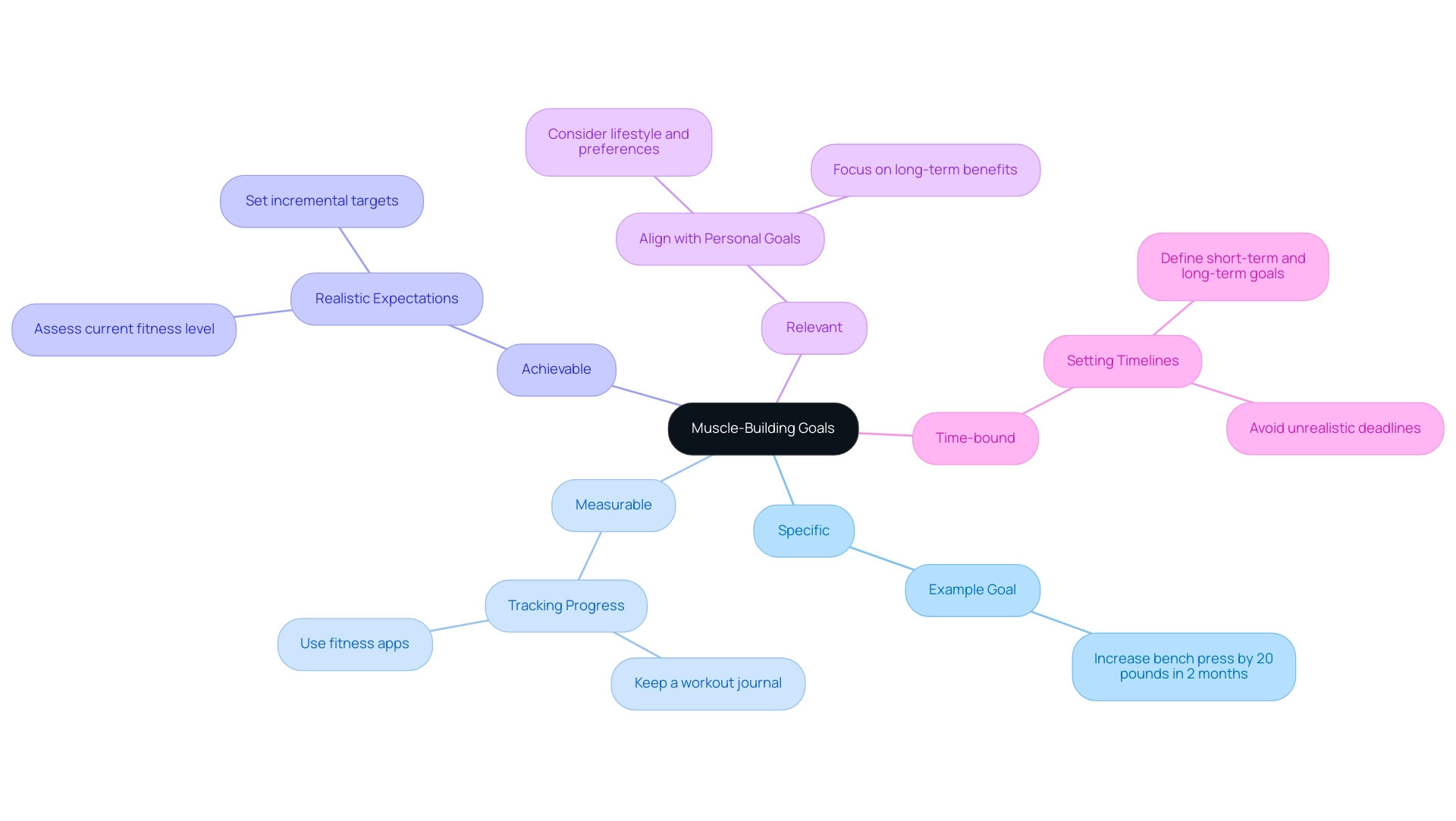
Effective Training Techniques for Rapid Muscle Growth
To understand how to get stronger fast and enhance physical development and overall power, it's essential to incorporate compound movements such as squats, deadlifts, and bench presses into your workout regimen. These activities engage multiple muscle groups at the same time, providing insight into how to get stronger fast while also promoting functional fitness. Research indicates that individuals who participated in structured training programs, working out twice a week for a period of ten weeks, saw significant improvements in abdominal muscular strength; for instance, in a recent study, the control group's strength changed minimally compared to a notable increase in the training group—from 53.27±9.14 to 68.16±6.16, highlighting the effectiveness of compound movements (p<0.05).
Alongside these activities, incorporating push-ups and pull-ups can provide additional benefits. Aim for 3-5 sets of 6-12 repetitions per exercise, implementing strategies on how to get stronger fast by emphasizing progressive overload through gradually increasing weights to stimulate adaptation. Furthermore, including high-intensity interval exercise (HIIT) is a method that shows how to get stronger fast while also elevating metabolism and improving definition.
Remember, allowing adequate rest between workouts is essential for muscle recovery and growth. As mentioned by Byung-Jun Cho, PhD, learning how to get stronger fast can be achieved by participating in a range of compound movements, which can lead to significant enhancements in muscular strength and make it an essential component of any workout plan. Furthermore, a case study on exercise volume and intensity suggests that integrating both multi-joint (MJ) and single-joint (SJ) exercises can effectively enhance outcomes.
Embrace these strategies, and inspire your team to prioritize their well-being through effective strength training.
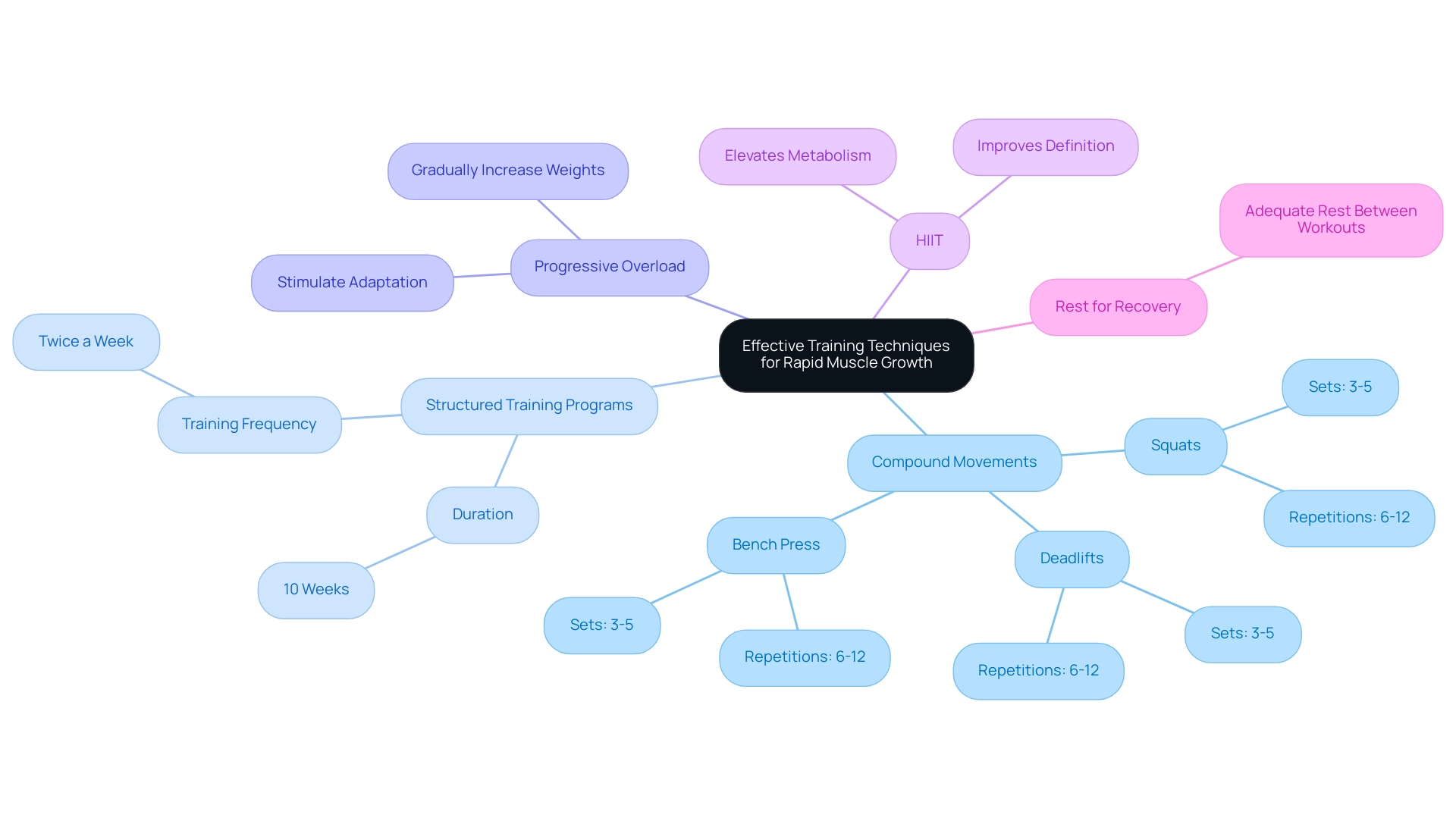
Nutrition Strategies to Support Muscle Development
To learn how to get stronger fast, it is non-negotiable to have a diet abundant in essential nutrients to promote muscle recovery and growth effectively. Aim for an intake of 1.6 to 2.2 grams of nutrients per kilogram of body weight, particularly for individuals who want to know how to get stronger fast while engaging in muscle-building activities. For individuals over 65, it is important to note that the recommended intake of nutrients is between 1.2 to 2.0 grams per kilogram of body weight.
Lean meats, dairy items, legumes, and dietary supplements are outstanding nutritional sources that demonstrate how to get stronger fast by aiding in tissue development. It's vital to consider the findings from Churchward-Venne et al., which highlight the importance of optimal nutrient amounts for post-exercise skeletal muscle reconditioning. Moreover, hydration plays a crucial role in performance, so ensure adequate fluid intake throughout the day.
Combining nutrients with sufficient carbohydrates will fuel your workouts, while healthy fats will support overall health. Timing your meals effectively around workouts is essential for understanding how to get stronger fast and improving recovery. As John W. Carbone from the School of Health Sciences at Eastern Michigan University aptly puts it,
- "Given the vast research evidence supporting the positive effects of dietary intake on optimal health, we encourage critical evaluation of current intake recommendations and responsible representation and application of the RDA as a minimum requirement rather than one determined to optimally meet the needs of the population."
This guidance emphasizes the significance of not only fulfilling basic requirements but also aiming for optimal nutrition customized for growth. It is also crucial to be aware of the potential adverse effects of excessive protein intake, which can include risks during pregnancy and associations with renal function and cancer mortality, emphasizing the need for a balanced approach to protein consumption.
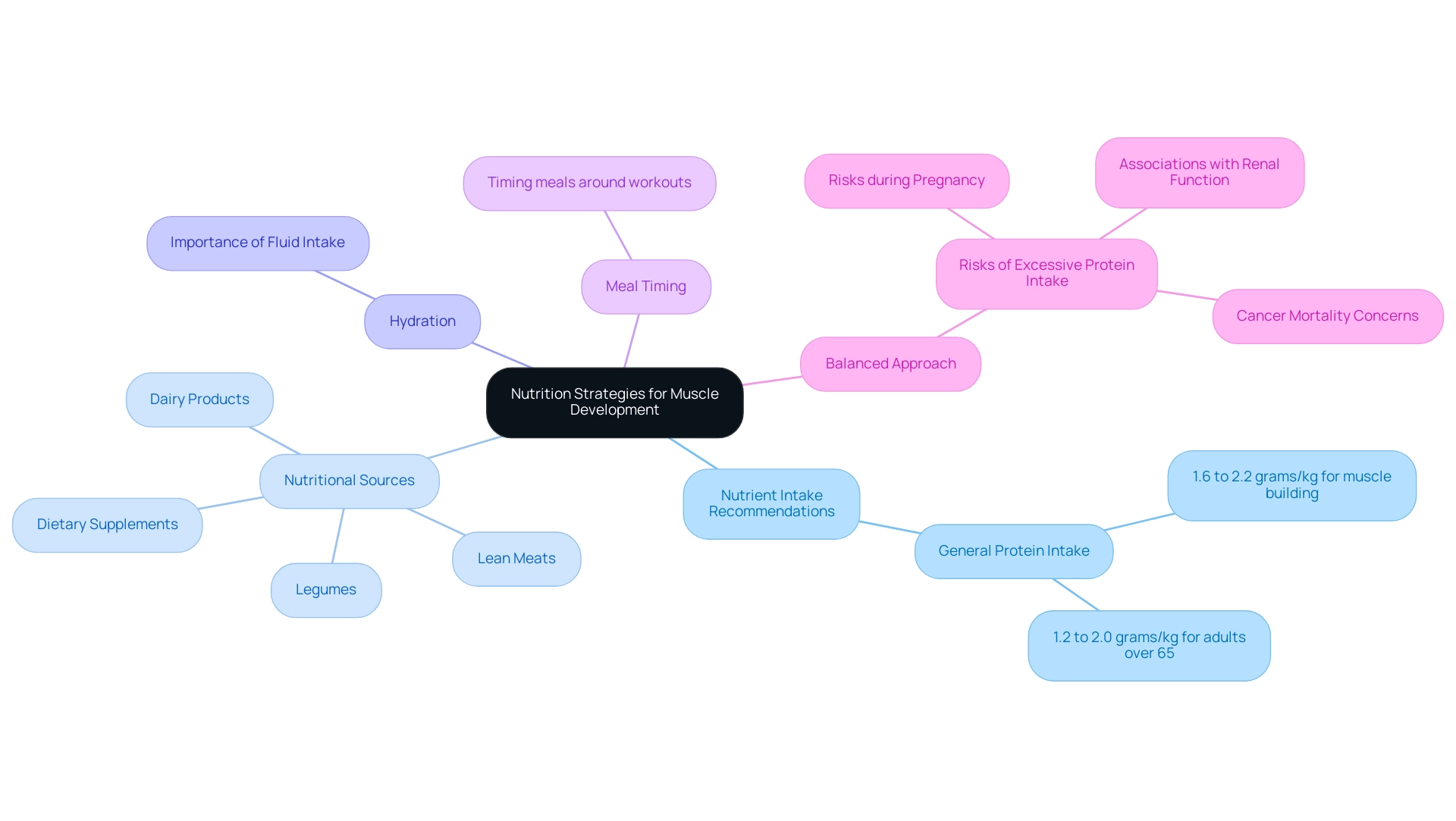
Monitoring Progress and Adjusting Your Approach
To learn how to get stronger fast and ensure continuous improvement, maintaining a workout journal is an invaluable practice. Recording your workouts, weights, and repetitions not only helps you stay accountable but also allows you to observe your progress over time. Aim to assess your performance every 4-6 weeks, carefully noting any increases in strength or shifts in body composition.
This regular evaluation is crucial for identifying trends and making informed adjustments to your regimen. If you encounter a plateau in your progress, don’t hesitate to modify your workout routine, as this could be essential for understanding how to get stronger fast—this might involve trying new exercises, ramping up the intensity, or fine-tuning your nutrition plan. Embracing flexibility in your approach is essential for sustained growth.
Personalized fitness coaching, delivered through our app-based method, provides tailored support and guidance, ensuring your regimen aligns with your unique goals. You can also hire our experienced team to build a custom program that incorporates evidence-based techniques, helping you make lasting lifestyle changes. As Abdulsalam Salihu Mustafa emphasizes, 'Tracking your progress is key to understanding what works and what doesn’t in your fitness journey.'
Furthermore, technology plays a critical role in this process. Fitness apps, like the highly-rated Bootcamp app with 4.8 stars from over 10,000 users, illustrate how integrating modern tools into your fitness journey can enhance effectiveness and keep you connected to your goals. Recent studies show that those who utilized mobile apps or fitness trackers during the pandemic were nearly twice as likely to meet aerobic activity guidelines compared to non-users.
Remember, with the right strategies, personalized coaching, and a commitment to regular progress assessments, you can discover how to get stronger fast and break through barriers to achieve impressive results.
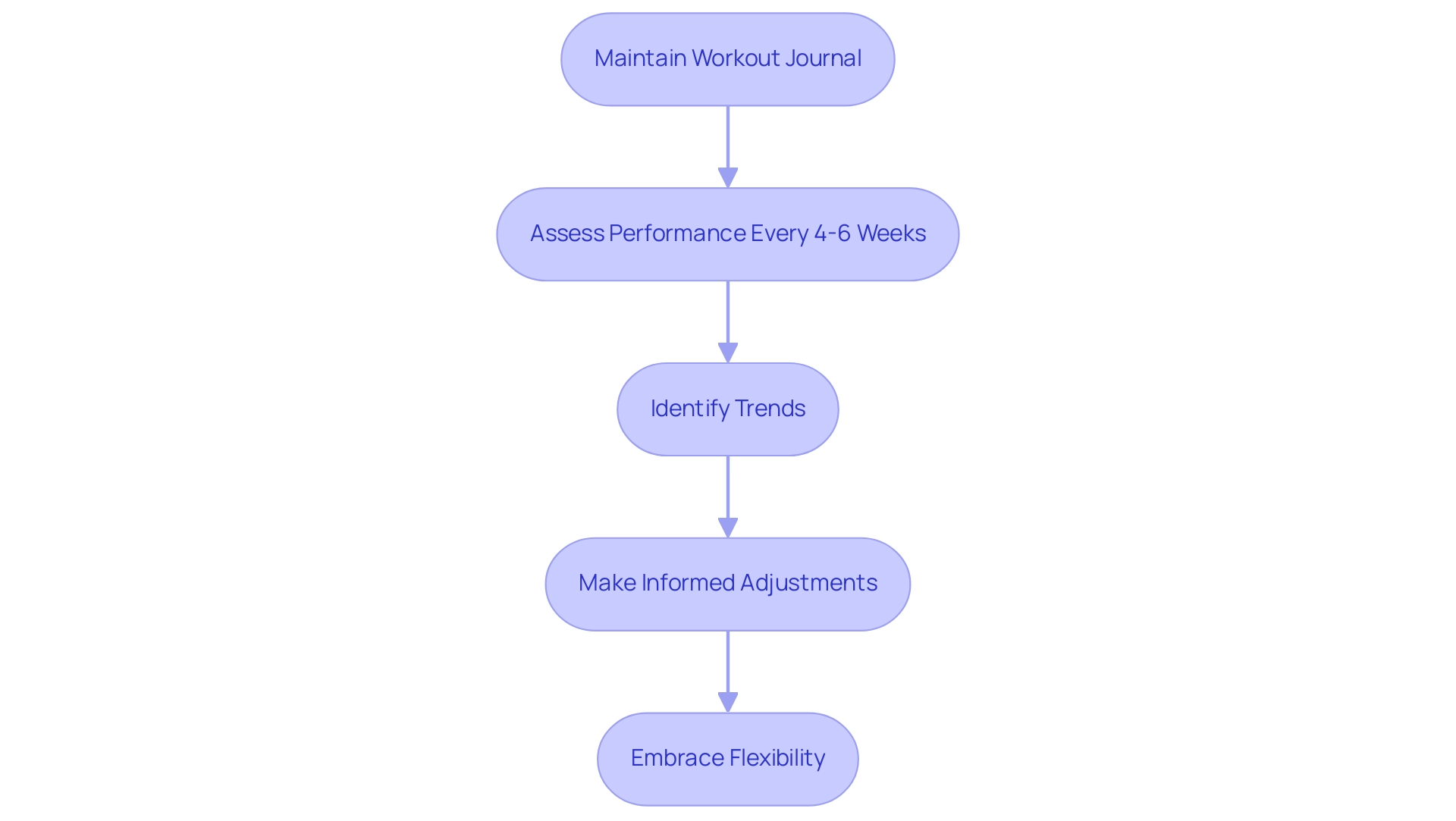
Overcoming Challenges in Your Muscle-Building Journey
Navigating the journey to muscle building while figuring out how to get stronger fast can often feel daunting, especially when faced with common challenges like time constraints, fluctuating motivation, and the risk of injuries. However, these hurdles can be transformed into stepping stones on your path to success. For those grappling with time limitations, consider that learning how to get stronger fast can be achieved through shorter, high-intensity workouts that can be effectively completed in under 30 minutes.
These efficient routines demonstrate how to get stronger fast while maximizing your workout effectiveness and fitting seamlessly into a busy schedule. Recent statistics indicate that LFT strength enhancements on the hack squat averaged 21.83 kg ± 11.17 kg (24%), illustrating the potential gains from concentrated exercise efforts. As noted by Fionn MacPartlin, Senior Strength & Conditioning Coach at the English Institute of Sport,
One of the challenges in preparing elite athletes is the common requirement for maximizing adaptations while balancing associated trade-offs like energy costs.
To discover how to get stronger fast, find a workout partner or sign up for a fitness class; the companionship and responsibility can spark your enthusiasm for exercise. Furthermore, insights from the case study titled "Practical Recommendations for Frequency of Exercise" emphasize the importance of individual responses and gradual adjustments to frequency, which can help optimize results. If injuries are a concern, it’s crucial to consult with a healthcare professional.
Adjusting your routine to accommodate your body’s needs is essential to prevent setbacks and promote long-term success. Remember, persistence is key—every setback can show you how to get stronger fast with the right mindset and approach. Furthermore, Nuckols' recent analysis on the effects of frequency on hypertrophy provides a contemporary perspective on how training frequency can significantly impact muscle growth, reinforcing the importance of adapting your regimen to your schedule.
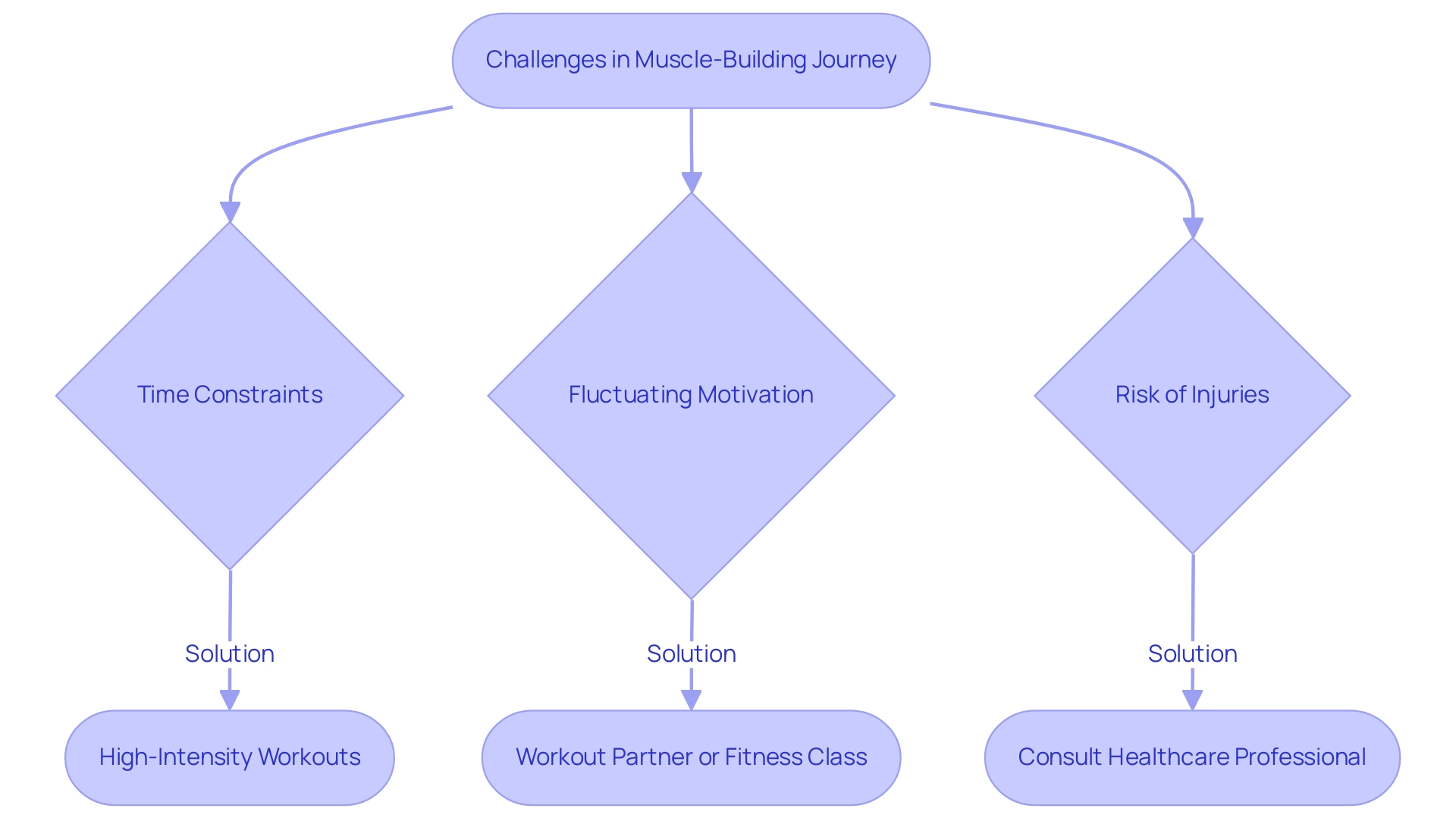
Conclusion
Setting out on a muscle-building journey involves more than just lifting weights; it requires a strategic approach that encompasses:
- Goal setting
- Effective training techniques
- Sound nutritional practices
By defining SMART goals, individuals create a clear roadmap that enhances focus and motivation, making it easier to track progress and celebrate milestones. Integrating compound exercises into training routines not only maximizes strength gains but also promotes functional fitness, while a well-planned diet rich in protein supports muscle repair and growth.
Monitoring progress through consistent evaluation and adjustments allows for continuous improvement and adaptation. Embracing technology, such as fitness apps, can further enhance accountability and engagement, making the journey more manageable and rewarding.
Challenges such as time constraints and fluctuating motivation can be met with innovative solutions, turning potential obstacles into opportunities for growth and resilience.
Ultimately, the path to muscle building is marked by commitment, adaptability, and a holistic approach to health and fitness. By prioritizing these elements, individuals can achieve not just their muscle-building goals but also foster a lasting commitment to their overall well-being. Embrace the journey, stay dedicated, and remember that every effort contributes to a stronger, healthier you.
Frequently Asked Questions
What are SMART goals in the context of muscle building?
SMART goals are specific, measurable, achievable, relevant, and time-bound objectives that help define clear fitness targets. For example, a SMART goal could be 'I aim to increase my bench press by 20 pounds within the next two months.'
How can writing down goals impact muscle-building success?
Writing down your goals and keeping them visible enhances focus and motivation, serving as a constant reminder of what you’re striving to achieve.
Why is it important to assess your current fitness level when setting goals?
Assessing your current fitness level helps establish realistic incremental targets that guide your progress and ensure that your goals are achievable.
What role does consistency play in achieving body composition goals?
Consistency is crucial for success in muscle-building endeavors, as studies show that individuals who set clear fitness goals tend to be more successful.
Can you provide an example of setting realistic timelines for strength gain?
An example is Jose, a 27-year-old male who wants to add 15 pounds of strength. His journey illustrates the importance of setting realistic timelines and expectations for gaining strength.
What types of exercises are recommended for getting stronger quickly?
Incorporating compound movements such as squats, deadlifts, and bench presses into your workout regimen is recommended, as they engage multiple muscle groups and promote functional fitness.
How do compound movements affect muscle strength?
Research indicates that individuals participating in structured training programs that include compound movements see significant improvements in muscular strength compared to those who do not.
What is the recommended approach to exercise repetitions for strength training?
Aim for 3-5 sets of 6-12 repetitions per exercise, and emphasize progressive overload by gradually increasing weights to stimulate muscle adaptation.
How does high-intensity interval training (HIIT) contribute to strength building?
HIIT can elevate metabolism and improve muscle definition, making it an effective method for enhancing strength.
Why is rest important in a strength training program?
Adequate rest between workouts is essential for muscle recovery and growth, allowing the body to adapt and strengthen after training sessions.

